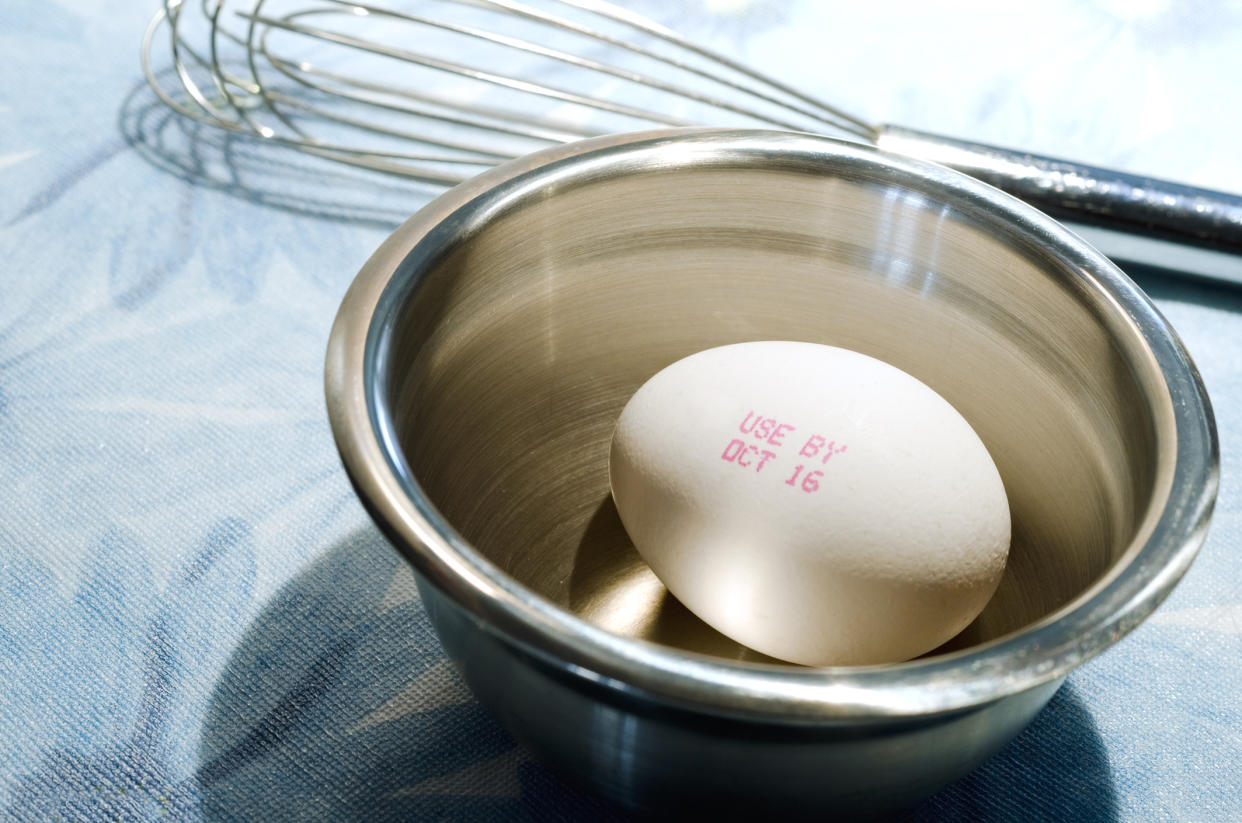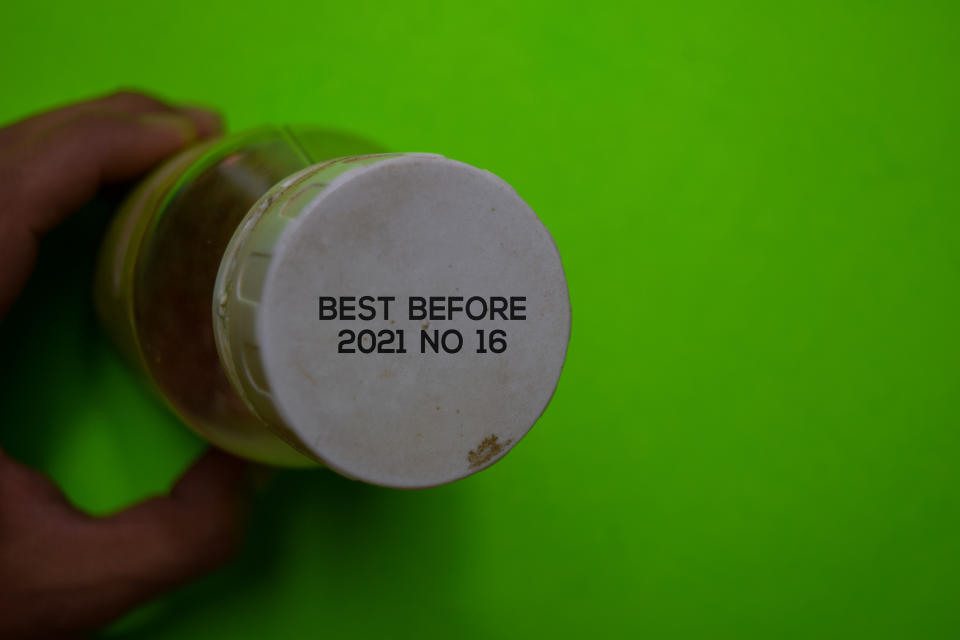Certain foods can be eaten months after their best-before date, Which? finds

Certain foods can be eaten for months after the best-before date and weeks beyond their use-by date, consumer watchdog, Which?, has suggested.
As the UK coronavirus lockdown continues, the government are encouraging us to shop less and urging us to try to use up what we have in our cupboards and freezers.
But many of us are confused about the various dates on produce labels, and whether it is safe to continue to consume foods that have gone out of date.
According to the Food Standards Agency (FSA) food may contain bacteria and if stored for too long or at the wrong temperature, can cause food poisoning.
But while it is important to understand the risks, there is a difference between use-by and best-before dates on the labels of food, and it is still possible to consume certain products even if they are passed their sell by date.
Read more: Quick and easy at-home lunch ideas (that aren't sandwiches)
Enlisting the help of microbiologist and food safety consultant Dr Slim Dinsdale, Which? have tried to clear up any confusion.
“We are far too ready to throw foods away because we go by the use-by date, when, in fact, they’re absolutely fine to eat beyond this point,” Dr Dinsdale, of Food Safety Experts, told the consumer champions.
While it is worth noting that while there is a degree of flexibility on many best-before and use-by dates, those on fresh and processed meat, poultry and fish should be adhered to.
Similarly, anyone classed as vulnerable and with underlying health conditions should also stick to following the dates on the labels.
What’s the difference between best-before and use-by?
According to the FSA a use-by date on a food label is about safety and is therefore the most important date to remember.
Foods can be eaten until the use by date but not after. “After the use-by date, don't eat it, cook it or freeze it,” the site explains.
“The food could be unsafe to eat or drink, even if it has been stored correctly and looks and smells fine.”
The FSA says the best-before date, sometimes shown as BBE (best before end), is about quality and not safety.
“The food will be safe to eat after this date but may not be at its best,” the site advises. “Its flavour and texture might not be as good.”
The site also explains that a best-before date will only be accurate if the food is stored according to the instructions on the packaging.

The foods that can and can’t be eaten past their best-before dates
Eggs
Dr Dinsdale advised Which? that eggs could be eaten one week after their best-before date if kept at room temperature and for one month beyond it when refrigerated, as long as they have the red lion safety stamp.
The fresh egg test is to drop it into a bowl of water to see if it floats. Eggs that float are no longer fresh. A bad egg will also have a strong sulphur smell when cracked and should be avoided.
Milk
Opened milk can be consumed up to a week after the use-by date for opened or two weeks unopened.
Long-life, nut, soya and oat 'milks' follow the same rules as cows' milk, lasting for up to two weeks after the use-by if unopened.
‘Raw’ or unpasteurised milk that hasn’t been heat-treated to kill microbes is different and should be avoided by pregnant women, young children and the elderly or frail.
Read more: The best virtual pub quizzes to download and play with your family and friends
Cheese
Hard cheese can be eaten three months after the best-before date or until mould growth becomes unacceptable, though Dr Dinsdale advises mould can be sliced off and thrown away.
“It’s the same kind of mould you get in cheeses like Stilton, so technically it can be eaten, according to taste,” he says.
Soft cheese can be consumed up to a week after the use-by date if bought in the supermarket. Those bought in markets or cheesemongers may not be pasteurised so should be eaten by the use-by date.
Dr Dinsdale suggests storing cheese in the fridge in an airtight container to prevent it drying out.
Yoghurt
Surprisingly yoghurts can last up to two weeks (opened) and three months (sealed) after the use-by date.
“The low pH and high acidity levels of yoghurt mean it’s designed to be long lasting,” Dr Dinsdale tells Which?.
Butter
Butter can last up to six months after the best-before date if refrigerated.
Low-fat spreads are alright to consume up to two to three weeks after the use-by date.
Meat and fish
Despite Dr Dinsdale advising that fish and meat is fine to use up to five days and one week respectively, after the use by date, the official recommendation is that fish should be cooked, eaten or frozen up to the use by date.
Read more: Restaurants share free tutorials to try at home

Fruit and vegetables
Fruit and vegetables, however, can be used for weeks after its purchase if they look OK. But there are some exceptions.
Prepared salads that are unopened should be eaten no more than one week after the use-by date, because of the potential for the growth of listeria.
The bits of potatoes which turn green should be cut out because that is the result of the chemical activity of solanine, which is toxic in excess.
Flour
Thankfully, considering we’re all getting our bake-on during lockdown, flour can last indefinitely according to Dr Dinsdale.
“Feel free to ignore any best before instructions on flour, as it will last indefinitely,” Dr Dinsdale advises. “The only thing that can happen to flour is that after six months to a year, you might get flour mites.” Eugh!
Bread
Got a stale old loaf of bread languishing in the bread bin. Well it should be ok for around one week after the best before date.
Dr Dinsdale suggests cutting off any small bits of mould so you can eat the rest. “If it’s very mouldy, it won’t harm you but it will be too unpleasant to eat,” he adds.



